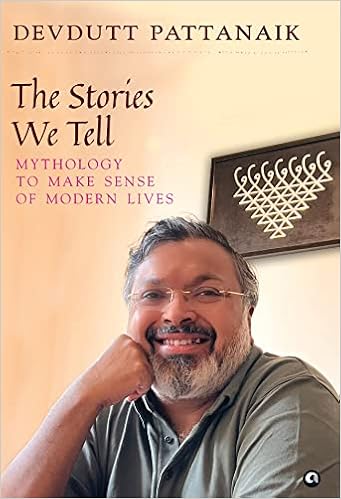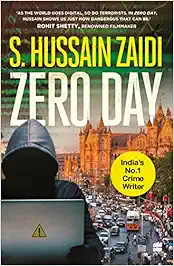2005th BLOG POST
10th Book of 2022
Discussing Indian mythology has become my new
favorite thing. To discuss, you also need to know about it which has made me
incline towards mythology books. There are only few authors who write on this
in non-fiction genre trying to state facts as it is without shying. One such
author is Devdutt Pattanaik who has become quite popular for retelling
mythology from different perspective. He also faces certain criticisms for
diluting some facts but it is inevitable to get through this because the topic
is sensitive and some people genuinely get hurt if they don’t find things
written the way they know about it. I am just done reading Pattanaik’s latest
book released by Aleph named “The Stories We Tell” having a tagline that says “Mythology
to make sense of modern lives”.
This 212-pages book discusses 72 different
topics/tales which speaks about different kinds of mythology not only
associated with Indian culture but other cultures and establishments too.
Devdutt tries to widen our vision about how some stories are retold in
different texts and cultures with the names of every culture’s respective Gods
or Kings. The similarities between these stories were really surprising as the
cultures are widely separated by the geography yet they speak almost the same
thing. I kept on getting astonished in terms of how stories pass not only from
one generation to another but even from one culture to another.
There are tales not only from Ramayan and
Mahabharat but other vedas and puranas too. This really makes this book unique
because the kind of stories and characters we get to know are generally not
spoken about in other mythology books. It initially became really overwhelming
for me to understand which character belongs to which phase of mythology but it
makes you surf Internet to better your knowledge base. It actually helped me
understand many different aspects of our Indian culture. There are few chapters
which closes with moral or question or author’s perspective on the tale. In any
case, it makes you think and realize what did the whole thing mean and that’s
the magic the book does with you.
There are few pointers that stayed with me
which I would like to mention as bullets below:
-
Author tells how Vishnu’s
avatars are shared on social media which relates with the Human evolution
theory but Devdutt gives it new outlook based on the caste system which I really
found interesting.
-
Different versions of
Kartikeya’s birth tells us of India’s diverse and complex layers in its
culture.
-
The chapter on “Two Epics
One Theme” tells us many similarities between Ramayan and Mahabharat which is
surprising. Author also discusses few differences to give the complete view of
it.
-
Surpanakha’s chapter was
interesting for me as we only know about her from the moment she finds Ram in
the jungle but here we get to know about her history before that incident which
was a new learning for me.
-
Author clarifies the
difference between Asuras and Rakshasas in one of the chapters which I believe
is very necessary for people to know because generally we categorize them as the
same kind of people.
-
“Hara and Hari” tells us
the difference in personalities of Shiva and Vishnu yet author discusses how
they are portrayed completely different in their images.
-
I never knew about Goddess
Lakshmi’s sister, Alakshmi and even a Diwali ritual dedicated to her made me
feel quite ignorant. Haha!
-
Another chapter on
prominence of Numbers in our history and vedas is nicely described using which
author also explains why he stopped at 72nd tale in this book.
-
The relevance of few animals
such as Fish or Horse is dedicated a chapter which makes us understand why we
often keep seeing or hearing about them in almost every mythological tale.
-
The difference in versions
even in Abrahamic culture is catchy to read because people often say that
Hinduism has multiple references whereas other religions doesn’t.
These are just few takeaways from the book
otherwise there are many points which you would like to learn and keep in your
mind so that you can have enough insights about our stories and culture. I wish
I had a great memory to store a wonderful book like this in my brain forever.
The chapters are short which makes it easy for you to read 4-5 of them every
day and consume them slowly. As Devdutt has put it in his previous books, I
would have loved to have him make us understand these stories through some hierarchical
diagrams or images because few chapters had so many characters and their
relationships explained that I would lose the link again and again.
Except that, this book is a good company to
have while traveling or before sleeping every day. I give this one 4.5 stars
out of 5. A very knowledgeable and well-researched piece of work.
Thanks.
WRITING BUDDHA











